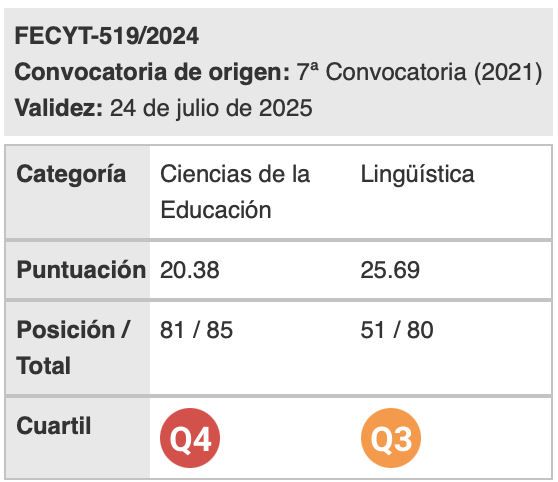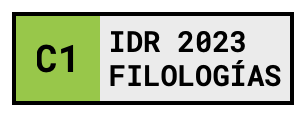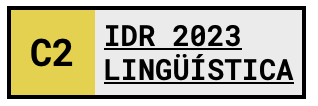Modal Hedges in Para-pharmaceutical Product Instructions: Some Examples from English and Serbian
Palabras clave:
Consumer health care product description, epistemic modality, expressions of procedural meaning, hedges, modal verbs.Resumen
The paper investigates how modal hedges (Coates 1983) understood as expressions of procedural meaning, i.e. expressions which instruct the addressee/reader how to process the propositional content of an utterance/statement (Watts 2004) are used in product descriptions, advertisements and consumer instructions leaflets for a number of products belonging to the Consumer Health Care category for the purposes of complying with consumer protection laws on the one hand and serving as an implicit disclaimer of manufacturer’s responsibility on the other. The analysis is carried out contrastively for two languages, English and Serbian. The results obtained are discussed and viewed as a matter of cultural variety and difference, especially taking into consideration the fact that consumer protection laws seem to be equally strict in US, UK and Commonwealth, Europe and Serbia.
Descargas
Citas
Brown, P., S. C. Levinson (1987). Politeness. Some Universals in Language
Bybee, J. and Fleischman, S. (1995). Modality in grammar and discourse. An introductory essay. In: Bybee, J. and Fleischman, S.(eds.) Modality in grammar and discourse Amsterdam and Philadelphia: John Benjamins, pp. 1-14.
Coates, J. (1983). The Semantics of the Modal Auxiliaries. London: Croom Helm.
Coates, J. (1995). ‘The expression of root and epistemic possibility in English’. In Aarts, B. and C.F. Meyer (eds), The verb in contemporary English.Theory and description. Cambridge: Cambridge University Press.
Crompton, P. (1997). Hedging in Academic Writing: Some theoretical Problems. Elsevier.
Fraser, B. (2010). Pragmatic Competence. The Case of Hedging. In: Kaltenböck, G., Mihatsch, W. and Schneider, S. (eds.) New Approaches to Hedging. Emerald Group Publishing Limited, pp. 15-34.
Frawley, W. (1992). Linguistic Semantics. Hillsdale, N.J.: Lawrence Erlbaum Associates, Publishers.
Goddard, C. (2002). ’Ethosyntax, ethnopragmatics, sign-functions and culture’. In Enfield, N.J. (ed.) Ethnosyntax. Explorations in grammar and culture. New York: Oxford University Press.
Goddard, C. (2006). Ethnopragmatics: a new paradigm. In: Ethnopragmatics. Understanding discourse in cultural context. C.Goddard (ed.). Berlin- New York: Mouton de Gruyter, pp. 1-30.
Holmes, J. (1995). Women, men and politeness. London: Longman.
Hoye , L. F. (2005). “You may think that; I couldn’t possibly comment!” Moda- lity studies: Contemporary research and future directions. Part II. In: Journal of Pragmatics, vol. 37, pp. 1481-1506.
Hyland, K. (1995). ‘The author in the text: Hedging scientific writing. Electronic Documents’. In Hongkong Papers in Linguistics and Language Teaching. Vol. 18. pp. 33-42.
Hyland, K. (1998). ‘Persuasion and context: the pragmatics of academic metadis- course’. Journal of Pragmatics, Vol. 30. pp. 437-455.
Lakoff, G. (1972). Hedges: ‘A Study in meaning criteria and the logic of fuzzy concepts’. In: Papers from the Eight Regional Meeting, Chicago Linguistic Society, pp. 183-228.
Lakoff, R. T. (1975). Language and woman’s place. Text and Commentaries. Revised and expanded edition. Mary Bucholtz, ed. New York: Oxford University Press. pp. 34-119.
Markkanen, R. and H. Schröder (1997). ‘Hedging: A challenge for pragmatics and discourse analysis’. In Markkanen, R. and H.Schröder (eds) Hedging and Discourse. Aprroaches to the Analysis of a Pragmatic Phenomenon in Academic Texts. Berlin: De Gruyter.
Panocova, R. (2008). ‘Expression of modality in biomedical texts’. In SKASE Journal of Translation and Interpretation [online]. Vol. 3, No 1. Available on http:// www.skase.sk/Volumes/JTI03/pdf_doc/7.pdf (accessed on August 10, 2010)
Skelton, J. (1997). The Representation of Truth in Academic Medical Writing. Applied Linguistics, Vol. 18, No 2. Oxford: Oxford University Press, pp. 121- 140.
The fair trading act: health and nutrition claims: August 2010. New Zealand Commerce Commission . Available at: www.comcom.govt.nz
Trbojević-Milošević, I. (2008). Grammar can hurt: A contrastive view of English and Serbian imperatives. ELLSSAC Proceedings. Vol. I. Beograd: Filološki fakultet, pp. 103 -114.
Trbojević-Milošević, I. (2009) Some Contrasts in Politeness Structure of English and Serbian. In Kuzniak M. and B. Rozwadowska (eds): PASE Papars 2008: Studies in Language and Methodology of Teaching Foreign Languages. Wroclaw: Oficyna Wydawnicza ATUT, pp. 177-184.
Vande Kopple, W. (1985). ‘Some exploratory discourse on metadiscourse’. In College Composition and Communication Vol. 36, No. 1. pp. 82-93.
Vázquez, I. and D. Giner (2008). Beyond Mood and Modality: Epistemic Modality Markers as Hedges in Research Articles. A Cross Disciplinary Study. Revista Alicantina de Estudios Ingleses 21, pp. 171-190.
Watts, R. (2004). Politeness. Key topics in sociolinguistics. Cambridge: Cambridge University Press.
Wierzbicka, A. (1994). ‘Cultural scripts’: A semantic approach to the study of cross-cultural communication. In: Pragmatics and Language Learning. Bouton L.and Y.Kachru (eds). Urbana Champaign: University of Illinois, pp. 1-24.
Wierzbicka, A. (1996). ‘Contrastive sociolinguistics and the theory of ’cultural scripts’: Chinese vs. English’. In Hellinger M. and U. Ammon (eds), Contrastive Sociolinguistics. Berlin: Mouton de Gruyter, pp. 313-44.
Descargas
Publicado
Cómo citar
Número
Sección
Licencia
Aquellos autores/as que tengan publicaciones con esta revista, aceptan los términos siguientes:
- Los autores/as conservarán sus derechos de autor y garantizarán a la revista el derecho de primera publicación de su obra, el cuál estará simultáneamente sujeto a la Licencia de reconocimiento de Creative Commons que permite a terceros compartir la obra siempre que se indique su autor y su primera publicación esta revista.
- Los autores/as podrán adoptar otros acuerdos de licencia no exclusiva de distribución de la versión de la obra publicada (p. ej.: depositarla en un archivo telemático institucional o publicarla en un volumen monográfico) siempre que se indique la publicación inicial en esta revista.
- Se permite y recomienda a los autores/as difundir su obra a través de Internet (p. ej.: en archivos telemáticos institucionales o en su página web) antes y durante el proceso de envío, lo cual puede producir intercambios interesantes y aumentar las citas de la obra publicada. (Véase El efecto del acceso abierto).

Revista de Lenguas para fines específicos is licensed under a Creative Commons Reconocimiento-NoComercial-SinObraDerivada 4.0 Internacional License.






















